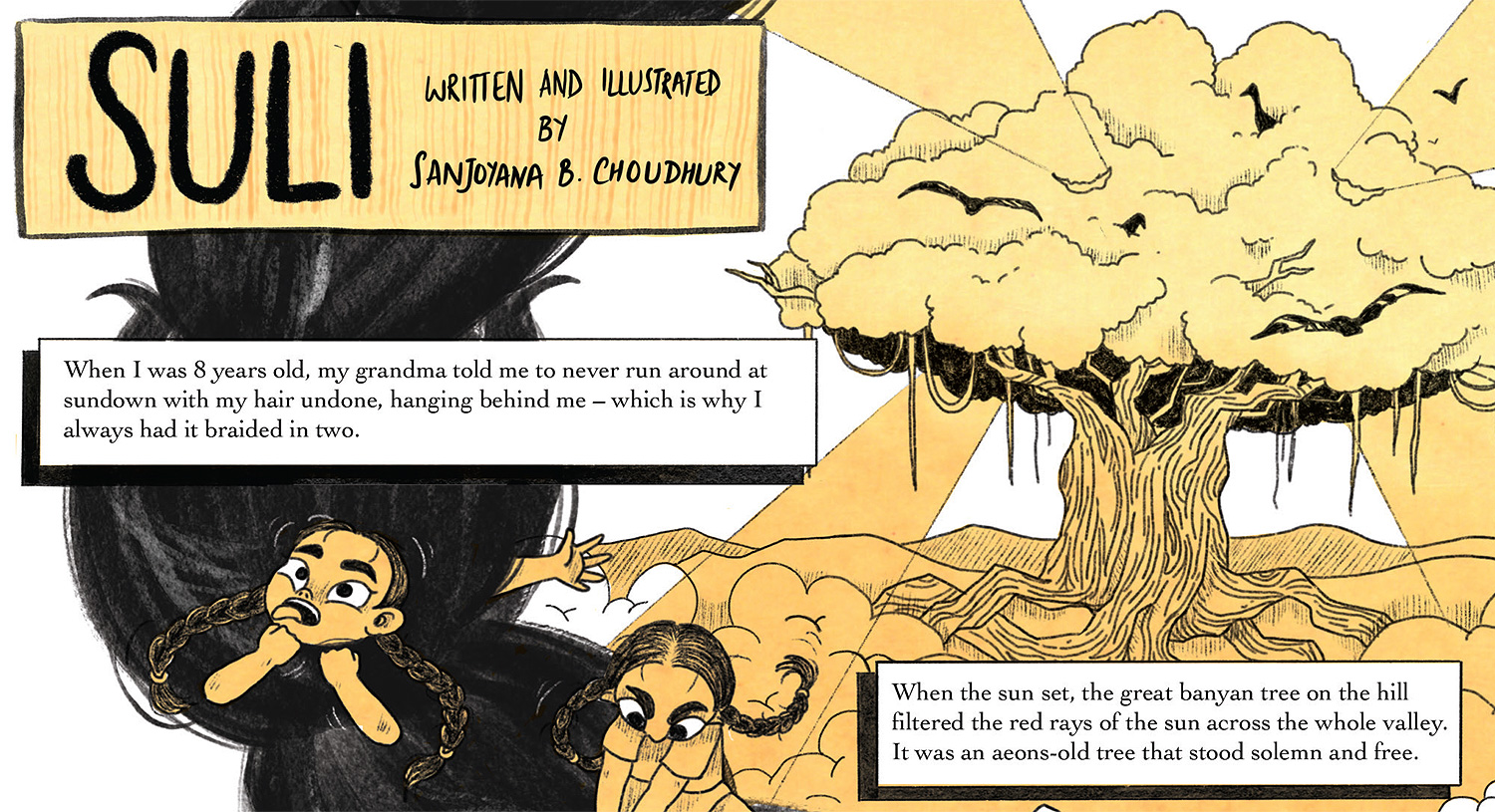
Vol 2 No 4 | Jan-Mar 2023
Suli
Story and art by Sanjoyana B. Choudhury
A woman’s hair holds cultural significance all over the world. In India especially, a woman’s hair is very strongly linked to her beauty, womanhood, and honour.
In films, television, ads, or magazines, Indian women are generally represented with long, flowing hair, which is considered as a feminine asset. Women are heavily discouraged from cutting their hair short. However, on the flip side, long untied hair can also be seen as something ‘shameless’ or ‘wild’. Although it is also said to have many health benefits, braided hair then has come to represent a woman’s nature and personality. If a woman is obedient and under people’s control, her hair should be braided.
Society and religion have countless ways of policing your hair—but as Sanjoyana Choudhury says in Suli, no one but you should get to decide what you do with your own hair!
https://scroll.in/magazine/834091/politics-of-hair
The Jokhini and more Assamese folklore
The Jokhini is a forest-dwelling demon in traditional Assamese (and Bengali) folklore. Although in Suli she is represented as a demon who “feasts on beautiful long hair from young women”, she is often also imagined as a female demon who lures males to kill them.
Assamese folklore also boasts a wide variety of other interesting demons and ghosts! These include the ‘Baak’, a malevolent spirit that kills people and possesses their corpses, the ‘Bamboo Ghost’, who lurks in bamboo forests, attempting to kill trespassers with bent bamboo and the ‘Puwali bhoot’, small ghosts the size of children who steal sweets from the kitchen.
https://twitter.com/blaftness/status/1359017639398416387?lang=en
https://elbyte.in/the-paranormal-residents-of-assam/
https://www.writingforums.org/blogs/types-of-ghosts-in-assamese-culture.105/

